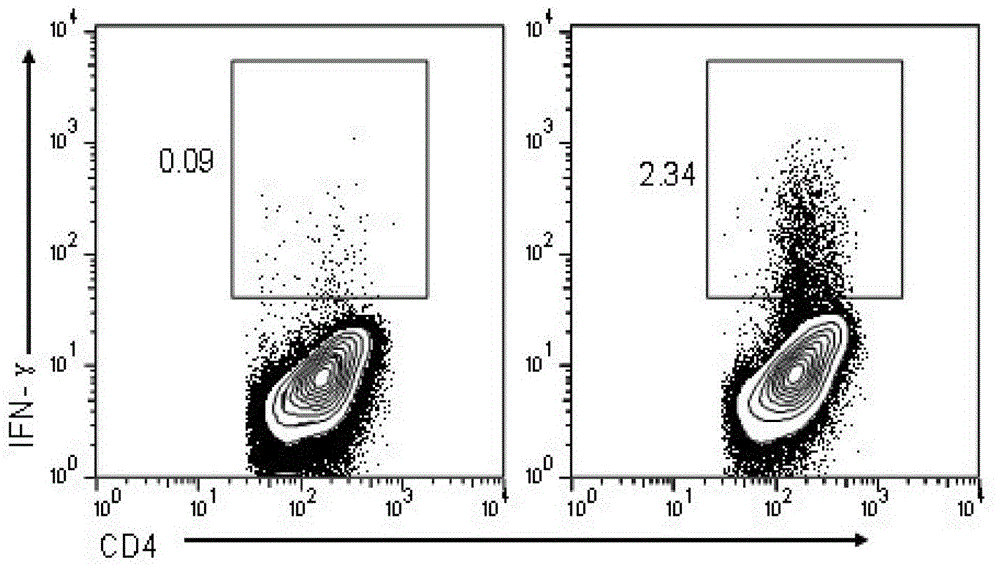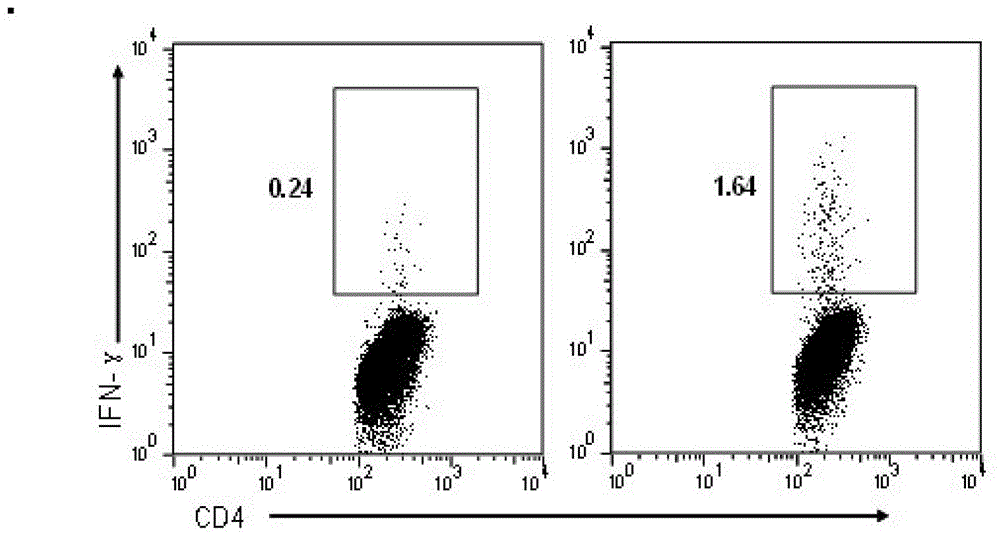Helicobacter pylori antigen HLA restrictive immunodominance epitope peptide and preparation method and application thereof
A Helicobacter pylori and dominant epitope technology, applied in the field of medical biology, can solve the problems of unavoidable epitopes, missed screening, and low accuracy
- Summary
- Abstract
- Description
- Claims
- Application Information
AI Technical Summary
Problems solved by technology
Method used
Image
Examples
Embodiment 1
[0043] Example 1 : Synthesis of 18 amino acid short peptides with overlapping steps and preparation of mixed peptide library
[0044] Helicobacter pylori flagellar urease protein B subunit (UreB), the sequence is conserved among various strains, with a full length of 569 amino acids, and the recombinant Helicobacter pylori urease B subunit is a 1-569 polypeptide derived from 11637 International Standard Strains. Therefore, the protein sequence of Helicobacter pylori flagella urease protein B subunit protein sequence (number P69996) derived from Helicobacter pylori 11637 was searched in the UniProt protein database, and a short peptide with 18 amino acid steps overlapping was synthesized from the first amino acid (provided by Shanghai Jier Biochemical Co., Ltd. The company assisted in the synthesis), a total of 93 (the last one is a 17 amino acid short peptide). The purity is greater than 70%. The synthetic peptide information is shown in Table 1. The synthesized peptides ...
Embodiment 2
[0054] Example 2 : Collection and Preservation of Peripheral Blood Mononuclear Cells from Patients Positive for Helicobacter pylori Infection
[0055] Collection and Preservation of Peripheral Blood Mononuclear Cells from Helicobacter Pylori Infection Positive Patients
[0056] The peripheral blood of patients with positive Helicobacter pylori infection was obtained from the Chongqing Blood Station of the Chinese People's Liberation Army, and was treated with C before blood collection. 13 For those who were positive for Helicobacter pylori infection in the urease breath test, the buffy coat cells were collected after blood collection, and then the peripheral blood mononuclear cells were separated with Ficoll-diatrizoate lymphocyte separation medium (Tianjin TBD Company), according to the actual instructions conduct. The isolated peripheral blood mononuclear cells were resuspended to a cell density of 1×10 7 / mL, add 1mL / tube into a cryopreservation tube, put it in a freeze...
Embodiment 3
[0057] Example 3 : Antigen-specific CD4 in peripheral blood of patients with Helicobacter pylori infection + Efficient expansion of T cells in vitro
[0058] 1. Method for expanding antigen-specific T cells in vitro
[0059] Resuscitate a tube of peripheral blood mononuclear cells from patients with positive Helicobacter pylori infection, and adjust the concentration of peripheral blood mononuclear cells in patients with positive Helicobacter pylori infection to 2.5×10 6 / ml, inoculate in 48-well cell culture plate (1ml / well), add appropriate amount of UreB antigen, mix well and incubate at 37°C, 5% CO 2 cultivated under conditions. On the fifth day, a low dose of recombinant human IL-2 (rhIL-2) (final concentration 25 U / ml) was added. On the 8th day, the medium began to turn yellow, and half of the medium was changed (the culture medium contained 25U / ml rhIL-2, and the cells were subcultured in time.
[0060] 2. ICS method to detect UreB-specific CD4 in peripheral blood...
PUM
 Login to View More
Login to View More Abstract
Description
Claims
Application Information
 Login to View More
Login to View More - R&D
- Intellectual Property
- Life Sciences
- Materials
- Tech Scout
- Unparalleled Data Quality
- Higher Quality Content
- 60% Fewer Hallucinations
Browse by: Latest US Patents, China's latest patents, Technical Efficacy Thesaurus, Application Domain, Technology Topic, Popular Technical Reports.
© 2025 PatSnap. All rights reserved.Legal|Privacy policy|Modern Slavery Act Transparency Statement|Sitemap|About US| Contact US: help@patsnap.com



